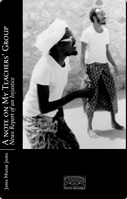Barre Hagi Elmi Ahmed
Tribute to an unknown martyr
Barre Hagi Elmi Ahmed, nicknamed Badho, was the son of known merchant
in Hargeisa who owned a corner-shop in downtown Hargeisa. Barre lost
his mother when he was a child. He attended the Biyodhacay Elementary
and Intermediate School in Hargeisa, although, from time to time,
he took some classes at the Qalax Boarding School in Gabiley. He then
started his secondary school education at Halane (Hargeisa). After
he completed the first school year, he transferred to the 26th
June secondary school in Hargeisa, and six months later he again transferred
to Ga’an Libah secondary school in Hargeisa. Barre was slender and
tall, and a handsome teenager. He had long black and straight hair.
A young man with bright future, Barre was cheerful and lively. He
was seventeen when on the first day of the “Dhagaxtuur”(1)
students’ protest against the arrest of “My Teacher's Group”(2),
on the 20th February 1982, around 12:45 a.m., he received
the deadly bullet on his chest from the Dictator Siad Barre’s army.
His short and promising life ended under the Jirde Hussein Building
in front of Hindigii Jaantilaal’s corner-shop, while his classmates
and friends were rushing him to the hospital. Barre was buried at
Xawaadleh cemetery in Hargeisa around 6:00 p.m. the same day.
People who knew Barre told me that he was lovable
and a very brave man, and he had a wonderful sense of humour. He
was a good role model for the young and possessed a leadership spirit.
His friend, Yussuf Isse, who was present that day in the protest, and
who was jailed by the Somali regime after that eventful day, said
"we missed Barre for his sense of friendship, his sense
of fearlessness and bravery, and for his sense of laughter".
Barre died for a cause that he believed was right. He left this
world as he lived in it, conscious of the danger, fearless of death,
and sure that the students’ struggle against the military regime
could carry us a long away. People like him never expected repayment
for their deeds, for no one can repay what Barre offered to us;
his young life. Their reward is acknowledging that they did the
right thing, and to let the younger generation know of the sacrifices
they made.
I and Barre did not know each other, even though our paths may
have crossed during the school years and during the “Dhagaxtuur”
event on that dreadful day. I pay this tribute to him as a young
hero who has given so much to us in his short lifetime and who continues
to do so even after his passing, as he will be remembered as a symbol
of my generation - a generation that paid much for freedom and had
survived the cruel treatment of the military dictatorship of Somalia.
I extend to his family members, who I do not know personally, my
deepest sympathy and condolence, after almost twenty years from
his untimely departure from this world.
May Allah rest his soul in peace. Aamiin.
Jama Musse Jama
1st October 2002,
Pisa, Italy.
Notes:
- “Dhagaxtuur” in Somali
means “stone throwing”, and it’s
the first protest of the students of Hargeisa and
other cities in the then Northern Somalia against
the military Government of Somalia for the release
of Hargeisa Self-help Group.
- “My Teachers’ Group”
is the name the author called the Hargeisa Self-help
Group.
click
here to return
|
| Comments
and corrections are well appreciated. Write to jamamusse@tin.it.
The author thanks Yussuf Isse and Hassan Haji Yaaxeen,
both members of the Somaliland Forum, for their kind
responses to his call of “who knows Barre
Hagi?”.
Jama Musse Jama is the author of “A
note on ‘My Teachers’ Group’:
news report on injustice” (www.redsea-online.com).
A book about the story of “Hargeisa Self-help
Group” or “UFFO Group” and their jailing.
This article is a collage of excerpts from that book. |
|
|


